Music Academy Comes Back in Person
2021 Season Sees a Return to Live Performance
By Charles Donelan
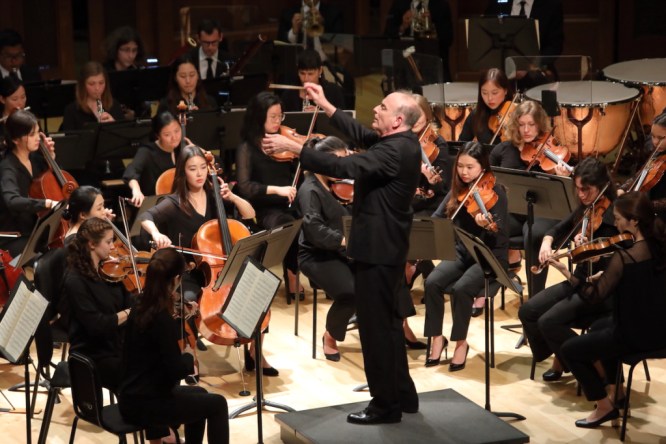
If you’re wondering what the biggest show in Santa Barbara will be this post-quarantine summer, look no further than the 2021 season at the Music Academy of the West. After a successful pivot to remote learning through 2020’s MARLI — the Music Academy Remote Learning Institute — live performances and audiences are back, and so are 110 of the fellows from last year. Thanks to the Music Academy’s generous offer to readmit all musicians from the class of 2020, the class of 2021 represents a first, as the majority of fellows will be involved with the school for their second consecutive year. This striking change means that they will bring with them not only the drive, the talent, and technique that got them into this elite training program in the first place, but also the added production skills and digital tools they acquired when they worked with their faculty mentors remotely last summer. It all adds up to an unexpected and potent combination of familiarity and pent-up creative energy.
In order to understand the kind of institution that the Music Academy of the West has become in recent years, it’s useful to examine both the changing landscape of classical music worldwide and the specific history of this particular institution. By looking at some of the new ideas about artistic forms and professional careers circulating among classically trained musicians today, and by thinking back to the courage and vision of those extraordinary figures who founded the organization more than seven decades ago, we can see how Santa Barbara has become the nexus for a powerful international network of next-generation artists.
The Setting: Miraflores and the Santa Barbara Ideal
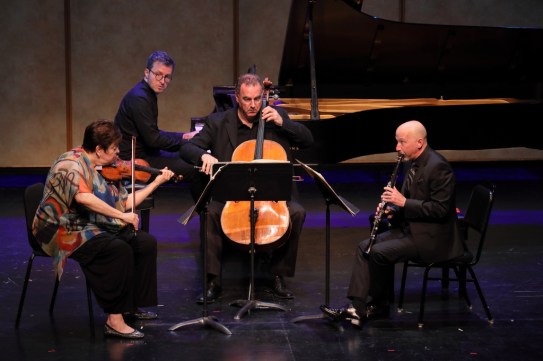
Regardless of whether you are a longtime patron of the Music Academy’s programming or a curious newcomer, you are probably aware that the organization’s campus occupies one of the city’s most enviable locations. Miraflores, the magnificent estate located on the bluff between the Santa Barbara Cemetery and the Biltmore Four Seasons, was granted to the organization by Helen Marso in memory of its original owners, Mr. and Mrs. John Percival Jefferson, in April of 1951 on the condition that it be used “for a conservatory of music only.” Despite the daunting responsibilities associated with maintaining such an impressive property, the organization, which had previously been located at the Cate School, took on the tasks of keeping the property in good repair and of limiting its use to the purpose stated in the grant.
From the standpoint of 2021, that decision looks like genius. Improvements to the property in recent years have created an environment for the study and performance of music that’s unrivaled anywhere in the world. Thanks to the exigencies of the pandemic, technological improvements to Hahn Hall, the Academy’s primary on-campus performance venue, have rendered it capable of state-of-the-art digital music and video production, all within the confines of an intimate space with outstanding acoustics. A partnership between the Academy and Steinway means that there are dozens of grand pianos, all of them faultlessly maintained and spread throughout the many rehearsal studios and performance spaces that abound within the lush gardens and spectacular buildings.

This dream of a location and facility represents the 21st-century fulfillment of a truly international ideal of culture that, while it has roots in the settlement of Santa Barbara and Montecito by wealthy Americans in the 1910s and 1920s, belongs in large part to a group of emigres from German-speaking middle Europe before, during, and after the Second World War. Beginning in the 1920s and accelerating steadily in the face of Hitler’s rise to power, a stream of classically trained artists left Berlin and Vienna for the United States. Thanks to the advanced standard of filmmaking established in the government-sponsored Universum Film AG conglomerate in Berlin, Germany produced the most technologically and aesthetically advanced films of the silent era, until, that is, the principal architects of this phenomenon saw the political writing on the wall and decamped for Southern California. Ernst Lubitsch arrived in 1922 and rose rapidly to head of production at Paramount. Directors Billy Wilder, Max Reinhardt, William Wyler, and Otto Preminger followed, along with maestro Otto Klemperer, who became the conductor and artistic director of the Los Angeles Philharmonic.
When the Music Academy celebrates its 75th anniversary next year, expect to hear a great deal about soprano Lotte Lehmann, the woman who, along with Klemperer and others, founded the organization in 1947. For decades the toast of music’s world capital, Vienna, Lehmann made Santa Barbara her home from 1937 until her death in 1976. Without her reputation as a performing artist and a teacher — she was the original star of the Academy’s signature feature, the Masterclass — the first decade of programming might not have attracted such luminaries as Darius Milhaud and Arnold Schoenberg. It’s largely to the example of this initial period, in which the Music Academy was synonymous with the highest levels of achievement not only in performance, but also in composition, that the current administration, faculty, and fellows owe their shared tradition of excellence and innovation. Thanks to Lotte Lehmann, Otto Klemperer, and the many citizens of Santa Barbara and Montecito who rallied to support their project, both in the early days and every decade since, the Music Academy of the West continues to exemplify the highest standards and the boldest intentions in music education.
The Season: To the Granada, Hahn Hall, and Beyond
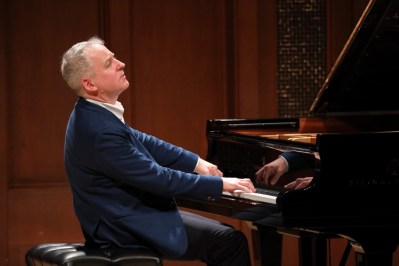
Given that the pandemic short-circuited so many players’ plans for recitals and concerts in 2020, the return to the concert halls cannot come soon enough. Thanks to the hard work not only of the staff at the Music Academy, but also that of the people who administer and maintain The Granada Theatre, the wait is nearly over. On Sunday, July 11, maestro Larry Rachleff and members of the Academy Chamber Orchestra will take the stage for the first public performance in that space since the Los Angeles Philharmonic concert in early March of 2020. The program includes Stravinsky’s Firebird Suite, a masterpiece with roots in the mid-20th-century period of international musical ferment described above.
The next day, Chi-chi Nwanoku OBE will deliver a keynote address online at 5 p.m. Nwanoku is the founder, artistic, and executive director of the Chineke! Foundation, the first professional orchestra and junior orchestra in Europe to be made up of a majority of Black and ethnically diverse classical musicians. A visionary engaged in creating the future of classical music, Nwanoku has been a mentor to, among others, the renowned young cellist Sheku Kanneh-Mason. Her talk is free with registration at musicacademy.org, and it’s sure to give all of us a lot to think about as we enter into the next month of intensive musical programming.
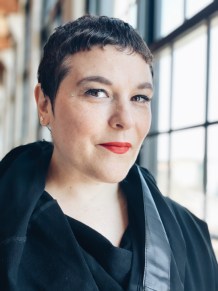
While afternoons at Miraflores are mostly devoted to the popular Masterclasses, evenings feature chamber ensembles made up of fellows and faculty members. These concerts will take place in Hahn Hall, which will also function as a movie theater this summer as one of the primary positive byproducts of last year’s quarantine season kicks in with dynamic premieres of exclusive video screening recitals to supplement the in-person performances. For example, on Thursday, July 15, cellist Steven Isserlis and pianist Sophia Rahman will appear on video in a Mosher Guest Artist recital featuring works by Bach, Bloch, and Dvořák. Supported by extensive technical enhancement of the already splendid acoustics in Hahn Hall, these video screening recitals will allow the Academy to present performances that would otherwise be constrained by distance and to access musicians of the highest level from wherever they happen to be based at the time. Don’t miss the Monday, July 26, appearance in this format of Tyshawn Sorey, the multi-instrumentalist and composer who received a MacArthur Foundation Grant in 2017. Operating at the border between classical and jazz, he’s one of the premiere improvising artists in the world today.
Fans of the orchestral experience should mark their calendars for three Saturdays — July 17, July 31, and August 7 — for an extraordinary sequence of concerts featuring two appearances by maestro Michael Tilson Thomas and the season finale with conductor Marin Alsop. The finale concert, with Beethoven’s Symphony No. & and Joan Tower’s Fanfare for the Uncommon Woman on the program, will be repeated, once at 2 p.m. and again at 7:30 p.m., with all tickets just $10 as part of the Academy’s Community Concert initiative.
Something Unexpected from the Vocal Institute
In what is perhaps the most intriguing development in a season full of surprises and innovations, Beth Morrison Projects, a distinguished company devoted to advancing the art of opera and related vocal performance, will be working with musicians and singers on a project called 21c Liederabend, op. MAW. The in-person screening of this project at Hahn Hall on Friday, July 23, includes what the MAW website describes as a “sensorial object” that will be distributed to each individual audience member. Conceived by Kathryn Hamilton, these objects are designed to be “unwrapped, sensed, assembled by, tasted, or otherwise engaged with by the audience member holding them, making the audience an integral part of the performance itself.” Stay tuned for more on this exciting experience, and for ongoing coverage of the Music Academy’s 2021 season. For more information and to reserve tickets for these concerts, visit musicacademy.org.



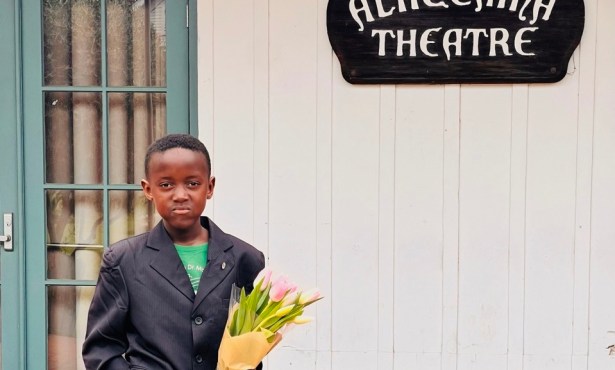
You must be logged in to post a comment.